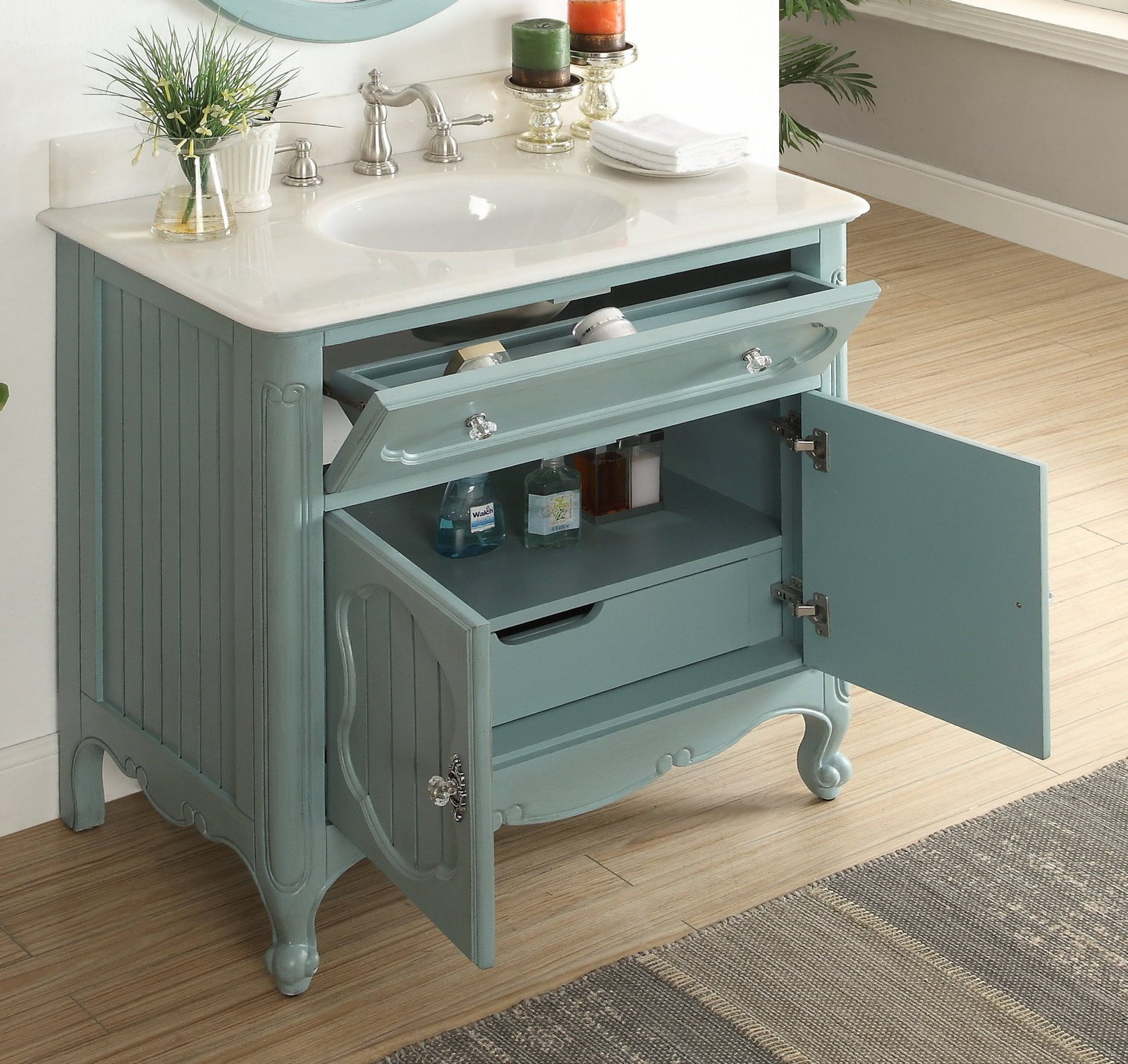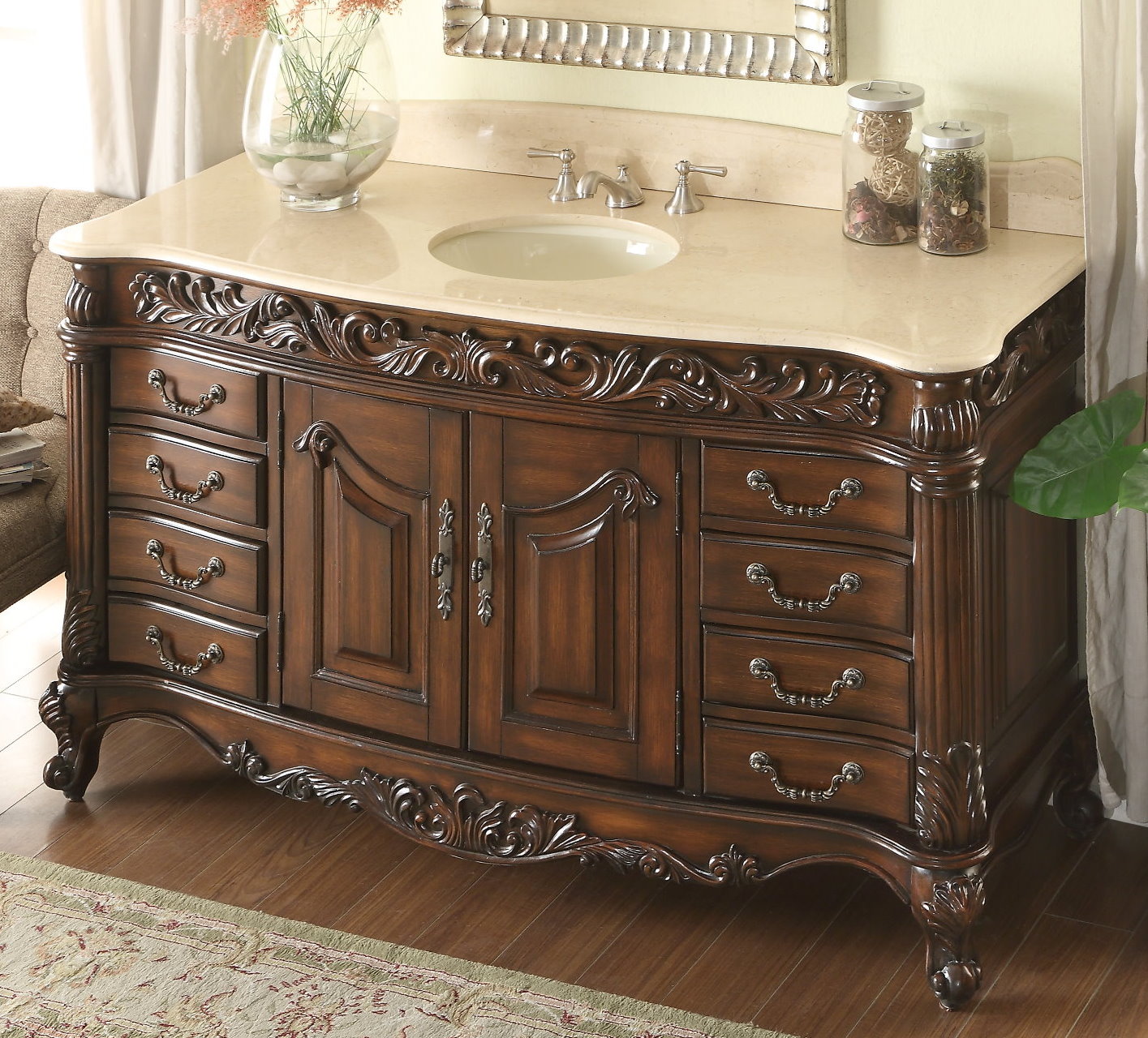History and Evolution of Victorian Bathroom Sink Cabinets

The Victorian era, spanning from the mid-19th century to the early 20th century, was a period of significant social, cultural, and technological change, profoundly impacting the design and functionality of household fixtures, including bathroom sink cabinets. This era witnessed the emergence of innovative materials, architectural styles, and evolving sanitation practices, which shaped the evolution of Victorian bathroom sink cabinets, setting the stage for modern bathroom design.
Origins of Bathroom Sink Cabinets in the Victorian Era
The concept of dedicated bathroom spaces with integrated fixtures, including sink cabinets, was a relatively new development during the Victorian era. Prior to this period, bathing practices were often communal and less private, with water being collected and heated in large vats or tubs. The advent of indoor plumbing and running water in homes, spurred by technological advancements in water supply and sanitation systems, revolutionized bathroom design. This shift paved the way for the introduction of bathroom sink cabinets, which offered a more convenient and hygienic solution for washing and grooming.
Materials and Design Aesthetics of Victorian Bathroom Sink Cabinets
Victorian bathroom sink cabinets were crafted from a variety of materials, reflecting the era’s penchant for craftsmanship and ornate detailing.
- Wood: Oak, mahogany, and walnut were popular choices for Victorian bathroom sink cabinets, prized for their durability, rich color, and ability to be intricately carved. These woods were often finished with varnishes or paints to enhance their natural beauty and protect them from moisture.
- Marble: Marble, known for its elegance and durability, was also a favored material for Victorian bathroom sink cabinets. Marble countertops and basins were often incorporated into these cabinets, adding a touch of luxury and sophistication.
- Metal: Cast iron and brass were used for plumbing fixtures, faucets, and hardware associated with Victorian bathroom sink cabinets. These metals were often adorned with intricate patterns and decorative elements, reflecting the era’s artistic sensibilities.
Design aesthetics in Victorian bathroom sink cabinets were characterized by:
- Ornate details: Victorian cabinets featured elaborate carvings, moldings, and decorative accents, showcasing the era’s love for intricate craftsmanship. These details often included floral motifs, geometric patterns, and classical themes.
- Dark and rich colors: Dark woods, such as mahogany and walnut, were favored for their richness and depth. These colors were often complemented by accents of brass or gold, creating a sense of opulence and grandeur.
- Gothic and Renaissance influences: Victorian design drew inspiration from Gothic and Renaissance architectural styles, evident in the use of pointed arches, decorative columns, and stained glass windows in some bathroom spaces. These influences also extended to the design of bathroom sink cabinets.
Victorian Bathroom Sink Cabinets Compared to Earlier Periods
Victorian bathroom sink cabinets differed significantly from those of earlier periods. Prior to the Victorian era, bathroom facilities were often rudimentary, with limited access to running water and sanitation. Sink cabinets, if they existed, were often simple and utilitarian in design, lacking the ornate detailing and sophisticated materials characteristic of the Victorian era.
- Simple design: Earlier bathroom sink cabinets were typically made from plain wood or metal, with minimal ornamentation. The focus was on functionality rather than aesthetics.
- Limited materials: The range of materials used for earlier sink cabinets was more restricted, with less emphasis on luxurious or exotic woods or marble.
- Smaller scale: Earlier bathroom sink cabinets were generally smaller in size, reflecting the limited space and amenities available in homes at the time.
The Victorian era ushered in a new era of bathroom design, characterized by increased emphasis on aesthetics, sanitation, and convenience.
Notable Victorian Bathroom Sink Cabinets and their Historical Significance
Several notable Victorian bathroom sink cabinets have survived to this day, providing valuable insights into the design and craftsmanship of the era.
- The Victorian Bathroom at the William Morris House, London: This meticulously restored bathroom features a beautifully crafted sink cabinet made of dark wood with intricate carvings and brass fixtures. The cabinet is a testament to the era’s love for craftsmanship and the integration of aesthetics and functionality in bathroom design.
- The Victorian Bathroom at the Metropolitan Museum of Art, New York: This bathroom, dating back to the late 19th century, showcases a marble-topped sink cabinet with elaborate brass fittings. The cabinet exemplifies the use of luxurious materials and intricate detailing that were characteristic of Victorian bathroom design.
- The Victorian Bathroom at the National Trust’s Blickling Hall, Norfolk: This bathroom features a mahogany sink cabinet with a cast-iron basin and elaborate brass fixtures. The cabinet highlights the fusion of wood, metal, and marble in Victorian bathroom design, creating a luxurious and functional space.
These examples demonstrate the enduring influence of Victorian bathroom sink cabinets on modern bathroom design. Their craftsmanship, materials, and aesthetic sensibilities continue to inspire contemporary designers and homeowners seeking to create elegant and functional bathroom spaces.
Design Elements and Styles

Victorian bathroom sink cabinets were not just functional fixtures but artistic expressions of the era’s aesthetic sensibilities. Their design elements and styles reflected the opulence and craftsmanship that characterized the Victorian era.
Key Design Elements
The design of Victorian bathroom sink cabinets was characterized by a blend of intricate details and functional elements. Some of the key design elements include:
- Ornate Carvings: Victorian cabinets were often adorned with intricate carvings, showcasing the craftsmanship of the period. These carvings could depict floral motifs, geometric patterns, or even mythological creatures.
- Elaborate Hardware: The hardware used on Victorian bathroom sink cabinets was equally elaborate. Hinges, handles, and knobs were often made of brass, bronze, or silver and were intricately designed to complement the overall aesthetic.
- Stained Glass: Stained glass was a popular decorative element in Victorian homes, and it was often incorporated into bathroom sink cabinets. Stained glass panels could be used to create windows, doors, or even decorative accents.
- Mirror and Shelf Combinations: Many Victorian bathroom sink cabinets featured a mirror and shelf combination. This design provided both functionality and visual appeal, allowing for storage and personal grooming in a single unit.
Styles of Victorian Bathroom Sink Cabinets
Victorian bathroom sink cabinets were designed in various styles, each reflecting the prevailing aesthetic trends of the time.
- Gothic Revival: This style, inspired by medieval Gothic architecture, featured pointed arches, intricate tracery, and heavy, dark wood. Gothic Revival cabinets often had a dramatic and imposing presence.
- Queen Anne: Queen Anne style cabinets were characterized by their graceful curves, flowing lines, and use of natural materials. They often featured intricate wood carvings and decorative elements like spindle legs and cabriole legs.
- Arts and Crafts: This style, popular in the late Victorian era, emphasized simplicity and functionality. Arts and Crafts cabinets were often made from natural materials like oak and were designed with a focus on craftsmanship and durability.
Influence of Materials, Victorian bathroom sink cabinet
The materials used to construct Victorian bathroom sink cabinets played a significant role in shaping their design.
- Wood: Wood was the primary material used for Victorian bathroom sink cabinets. Various types of wood were used, including oak, mahogany, walnut, and cherry, each with its unique grain pattern and color.
- Marble: Marble was a popular material for countertops and sinks in Victorian bathrooms. Its elegance and durability made it a desirable choice for high-end cabinets.
- Metal: Metal, particularly brass and bronze, was often used for hardware and decorative accents. Metal elements added a touch of sophistication and durability to the cabinets.
Visual Representation of a Typical Victorian Bathroom Sink Cabinet
Imagine a freestanding cabinet, roughly 4 feet tall and 3 feet wide, crafted from rich mahogany. Its intricate carvings, depicting floral motifs and swirling vines, enhance its visual appeal. The countertop, made of polished marble, provides a smooth surface for a porcelain basin. The cabinet doors, adorned with brass hinges and ornate handles, open to reveal shelves for storage. A large, framed mirror hangs above the countertop, reflecting the room’s beauty and amplifying the sense of grandeur.
Practicality and Functionality

Victorian bathroom sink cabinets, despite their aesthetic appeal, were not merely decorative additions. They served crucial practical purposes, addressing the sanitation and hygiene needs of the era.
Storage Capacity and Accessibility
Victorian bathroom sink cabinets were designed to accommodate the essential toiletries and grooming tools of the time. Their storage capacity was often limited, reflecting the smaller size of Victorian bathrooms. However, the cabinets were meticulously crafted with compartments and shelves to maximize storage efficiency.
The accessibility of these cabinets was a key consideration.
Cabinets were typically positioned at a convenient height, ensuring that items could be easily reached.
The use of hinged doors and drawers allowed for efficient access to the stored items.
The design of the cabinets reflected the practical need to keep these essential items organized and readily available.
Plumbing and Water Systems
The Victorian era witnessed significant advancements in plumbing technology, directly impacting the design and functionality of bathroom sink cabinets. The introduction of running water and improved drainage systems allowed for the integration of sinks and faucets into the cabinets.
The cabinets often housed the plumbing fixtures, including the pipes and valves, concealing them from view.
This integration was a testament to the evolving functionality of Victorian bathroom sink cabinets, as they seamlessly incorporated essential plumbing elements.
Functionality Compared to Modern Bathroom Vanities
Victorian bathroom sink cabinets, despite their historical significance, differed considerably in functionality from modern bathroom vanities. The advancements in plumbing technology and the changing needs of modern bathrooms have led to significant differences in design and features.
Modern bathroom vanities are typically larger, offering greater storage capacity.
They often incorporate drawers with soft-close mechanisms, providing a smoother and more user-friendly experience.
The integration of lighting, electrical outlets, and even built-in mirrors within modern vanities further enhances their functionality.
These features are a testament to the evolution of bathroom design and the increasing emphasis on practicality and convenience.
Features and Functionalities of Victorian Bathroom Sink Cabinets
The following table summarizes the typical features and functionalities of Victorian bathroom sink cabinets:
| Feature | Functionality |
|—|—|
| Storage capacity | Limited, but optimized with compartments and shelves |
| Accessibility | Convenient height, hinged doors, and drawers |
| Plumbing integration | Cabinets often housed plumbing fixtures |
| Materials | Wood, often with intricate carvings and embellishments |
| Style | Victorian aesthetics, including elaborate designs and ornate hardware |
The Victorian bathroom sink cabinet, with its intricate carvings and ornate details, often lacked the practicality of modern design. For a space-saving solution that complements the elegance of a Victorian bathroom, consider a slim bathroom storage cabinet by OakridgeTM.
This sleek and functional cabinet can be tucked away discreetly, providing ample storage without sacrificing the charm of your vintage bathroom.
Victorian bathroom sink cabinets, with their intricate carvings and ornate details, are a testament to a bygone era of elegance. While they may be steeped in history, the principles of storage and functionality they embody remain timeless. Modern bathroom designs often embrace a more minimalist aesthetic, opting for sleek and practical solutions like a grey bathroom storage cabinet.
These cabinets offer a contemporary take on organization, seamlessly blending with modern décor while providing ample space for toiletries and essentials. Regardless of the style, a well-designed bathroom cabinet is a key element in creating a functional and aesthetically pleasing space.
